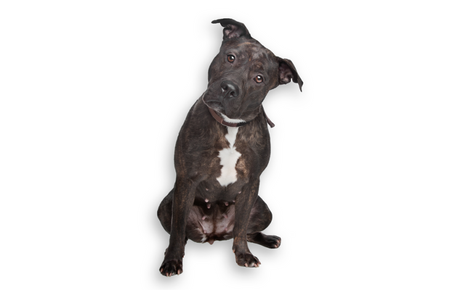Pitweiler Breed Guide

Breed Group:
Mixed Breeds
Get 30% off
Join our Newsletter
Sign Up Today
Pitweiler Background Info & History
The Pitweiler is a cross between a Rottweiler and a Pit Bull. As you could probably assume, the Pitweiler shares many of the same characteristics as their beloved parents. Unlike most dogs, this mix breed was specially designed by breeders who wanted a dog that could be both a protector and family companion. These designer breeds have only been around for the past 10 to 20 years, but have gained a steady following ever since.
Pitweiler Temperament & Personality
Each Pitweiler may exhibit unique personality traits from one another depending on their genetics. Both the Pitbull and Rottweiler are extremely loyal and protective of their owners, especially when they are around strangers. This quality makes the Pitweiler an excellent watchdog and also a great addition to the family.
To ensure that your Pitweiler develops good behavior later on in life, make sure to socialize your dog from a young age. Introduce your dog to different people, places, and experiences while he is still a puppy. This will help your pup feel more comfortable with unfamiliar situations on a daily basis.
Pitweiler Training
Training a Pitweiler can be fairly easy as long as the process starts at a young age. These dogs are naturally smart, however, if they are forced to do something they do not want to do, then they will find something else that interests them more.
That’s why it’s important to start the dog training process while they are still a puppy. This will make them identify you as the leader of the household and respect you more when they are called to attention.
Pitweiler Exercise
The Pitweiler is a stocky breed that requires daily exercise not only for their physical health but for their mental health as well. Make sure to take your dog for a 30-minute walk every day at the very minimum. If you are looking to switch up your dog’s exercises and keep it more interesting, try having him participate in obedience training or agility coursing.
Pitweiler Lifespan
The average Pitweiler lives to be about 12 to 16 years old.
Pitweiler Popularity
Since the Pitweiler is not officially recognized by the American Kennel Club, it is difficult to tell just how popular they really are today. What is known is that both the Rottweiler and the Pitbull are very common breeds within the U.S. Many Pitweiler owners will say that this breed serves as an excellent household pet when they are properly trained and socialized.
Pitweiler Feeding
Pitweilers should consume between 1 ½ and 2 ½ cups of high-quality food a day, split into two separate meals. When finding the right food for your animal, make sure to look for products that contain all-natural and nutritious ingredients. Try to stay clear of any products that contain harmful preservatives, fillers, or byproducts.
Pitweiler Grooming
Just like their parents, Pitweilers do not require a lot of grooming on a regular basis. As a general rule of thumb, it is always a good idea to brush their coat at least once a week to keep it fresh and looking its best.
Aside from regular dog coat grooming, trim your dog’s nails every couple of weeks to prevent overgrowth or cracking. It is also recommended to brush his teeth at least once a week to avoid tartar and bacteria from building up.
Are Pitweiler’s Good With Kids?
As long as your Pitweiler has been raised with children, he should have no problems living under the same roof with one another. In fact, Pitweilers are generously loving, which makes them a wonderful playmate for an older child. Just like with any breed, make sure a parent is always present during any interactions between the dog and child.
Pitweiler Health Problems
The Pitweiler is a generally healthy breed, however, they are still prone to several health complications. These canine health problems may include:
Hip Dysplasia: Hip dysplasia in dogs is a common hereditary disorder that affects many breeds. This occurs when the hip socket and thighbone do not fit properly together how it should. Once this happens, a dog may experience pain, lameness, or even arthritis.
Hypothyroidism: Hypothyroidism occurs when the body is unable to produce enough thyroid hormones which can cause weight gain, lethargy, and a number of different symptoms.
